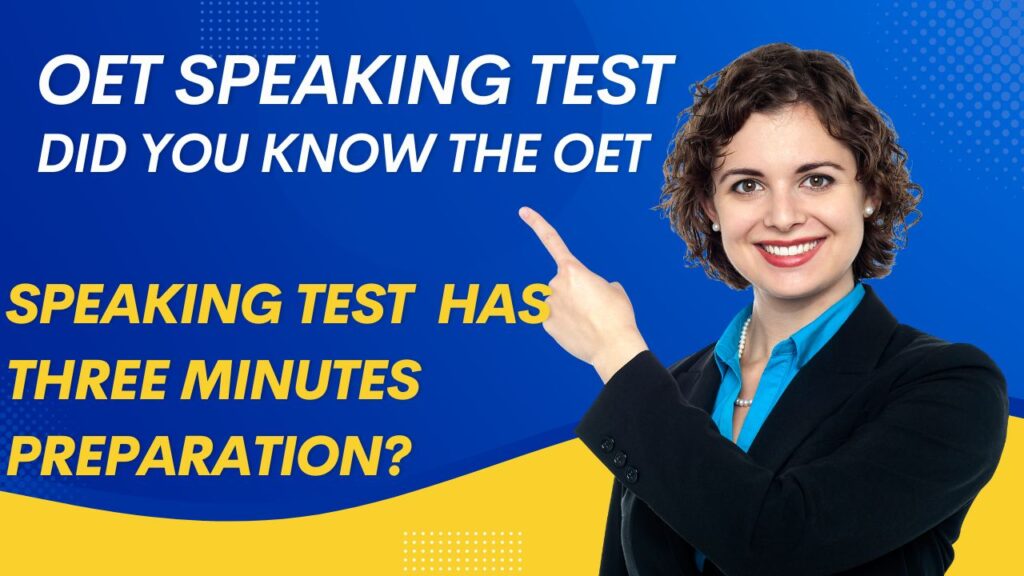Did you know the OET Speaking test gives you three Preparation Minutes?
OET Speaking Test Preparation: In this blog post, we will focus on the OET Speaking test and provide you with tips and strategies to help you prepare effectively for this section.
Understanding the OET Speaking Test Format
The OET Speaking test consists of two parts and takes approximately 20 minutes to complete. The first part of the test is a warm-up conversation between you and the examiner, where you will be asked general questions about your professional background and interests. This conversation lasts for approximately two to three minutes.
The second part of the test is the role-play section, where you will be given a healthcare-related scenario and asked to take on a role that is relevant to your profession. You will have three minutes to prepare for the role-play and five minutes to complete the task. During this time, you will need to interact with the patient or their caregiver and demonstrate your ability to communicate effectively in English.
Use the 3 minutes at the start of the OET Speaking Sub-Test Wisely
You will be given three minutes to prepare with the role card before each role play in the OET Speaking test. However, many candidates are not aware of this crucial preparation time, which is an essential period to prepare before the OET Speaking sub-test.
How to use these Three Minutes
Utilize this time to rapidly read through the role card a few times to confirm patient details, situational factors, and the topic to be discussed during the five-minute speaking period. It is also advisable to use a practical checklist to maximize your role card preparation time.
Ask Yourself these five Questions:
How does the patient/family member feel about this situation?
Look for adjectives in the background information or put yourself in the patient’s shoes to understand their feelings.
What are they thinking will be discussed in the conversation?
Once more, endeavour to empathize with the patient or family member. Deliberate on their expectations and incorporate this insight when communicating with them.
Is this what you plan to discuss or is there a difference?
For instance, if a patient presents with insomnia and requests a prescription for sleeping pills. But your role card requires you to prioritize lifestyle changes over medication, you must consider how to convey this information to the patient. Since this may be unexpected for the patient, you should strategize how to best present the contrasting information.
Is there any medical language on the role card I need to avoid because they won’t understand it?
In cases where the patient is new to a health situation, they may be unacquainted with the related terminologies such as symptoms, treatment options, or conditions. If you opt to utilize these technical terms, you must explain them or convert them into the simpler lay language to ensure that the patient comprehends.
Which tasks do I need to spend the most time on?
Assign a tentative timeframe for completing each task, aiming to accomplish all tasks within five minutes. While it may be impossible to cover all tasks, depending on the patient or family member’s priorities, allocating time for quicker tasks can help prevent overspending on them. This approach ensures that ample time is available to address tasks that require more in-depth discussions.
Conclusion
Conclusively, excelling in the OET Speaking test is pivotal to obtaining a high score in the OET exam. To achieve this, it is imperative to prepare adequately for this section. Therefore by implementing the tips and strategies highlighted in this post, you can enhance your speaking abilities and augment your likelihood of triumphing in the OET Speaking test.
For more resources check out our Youtube Channel
| 15-hour All-Inclusive OET Course! |


